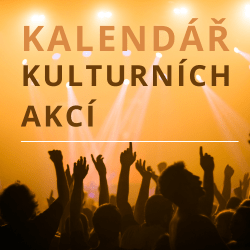The Red Tower of Death in Ostrov is a red-brick tower that served in the years 1951 – 1956 as a sorting house for uranium ore in the Communist work camp, Vykmanov II (code name “L”).
Political prisoners – heroes of the Resistance, pilots, soldiers, Catholic priests, and intellectuals, who were considered to be the greatest enemy and threat to the Communist regime, worked here in inhumane conditions. At the turn of the 1950s and 1960s, the building complex became a part of the newly constructed trolleybus factory, Škoda Ostrov, which definitely terminated production in 2008, and the Red Tower of Death and the related property was donated to the Confederation of Political Prisoners of the Czech Republic. In the same year, the Red Tower of Death was declared a National Cultural Monument.
 The Red Tower of Death is one of the five locations in the Czech Republic that were, along with 17 other regions in Saxony, declared as a UNESCO World Heritage Site on 6 July 2019 under the comprehensive title “Erzgebirge/Krušnohoří Mining Region”.
The Red Tower of Death is one of the five locations in the Czech Republic that were, along with 17 other regions in Saxony, declared as a UNESCO World Heritage Site on 6 July 2019 under the comprehensive title “Erzgebirge/Krušnohoří Mining Region”.
Regular tours of the Red Tower of Death
History
Shortly after World War II, the Czechoslovak government committed that all uranium ore mined in our country will be supplied without adequate compensation to the Soviet Union. At the time, one of the largest deposits in the world was found here. Because work in the mine was dangerous, political prisoners were also involved in the straining extraction of uranium.
 Aside from the range of camps in the Jáchymov region, a workplace in Ostrov for the final processing of uranium ore was created, which was one of the most feared camps, the so-called “liquidation”, or the “L”, camp with the tower that later came to be known as “The Tower of Death”. Since 2008, the owner of the Tower of Death is the Confederation of Political Prisoners of the Czech Republic, which is trying to create a Museum of Slave Labour in this building and on the surrounding property (ca. 2.5 hectares). In 2008, this dominant was declared a National Cultural Monument.
Aside from the range of camps in the Jáchymov region, a workplace in Ostrov for the final processing of uranium ore was created, which was one of the most feared camps, the so-called “liquidation”, or the “L”, camp with the tower that later came to be known as “The Tower of Death”. Since 2008, the owner of the Tower of Death is the Confederation of Political Prisoners of the Czech Republic, which is trying to create a Museum of Slave Labour in this building and on the surrounding property (ca. 2.5 hectares). In 2008, this dominant was declared a National Cultural Monument.

Current State
The tower with the hall in the former premises of the forced labour camp served as a crushing mill of uranium ore and as an expedition warehouse. After the camp was abolished, it was used by Škoda Ostrov as a warehouse. The building, despite of continuous maintenance within the limited means of its owner, is not in a good technical state. The repairs carried out to date had the goal of primarily preventing the further dilapidation of this National Cultural Monument and to secure the buildings from collapsing. The Karlovy Vary Region and the Town of Ostrov contributed finances to this action. Presently, a concept for the future use of this monument is being prepared. Already today, regular tours take place from May to September.
Vision
The concept proposal and the preliminary design of the grounds is adapted to a smaller property than that of where the Vykmanov “L” camp was originally located, with a size of ca. 2 ha. The camp originally spread out over ca. 5 ha. Therefore, the proposed draft is elaborated as an example of a forced labour camp from the 1950s.
The Tower of Death is to be restored to its original state, and then serve as a museum of slave labour, but also as a lecture hall or congress centre. Another originally technical building will be also restored and will serve partly as an office building and partly as the original guardhouse with the interrogation rooms of the State Secret Police (StB). The remaining proposed buildings should serve as examples of the living quarters, community centre, canteen, etc., originally situated at the camp. They should thus serve to form an idea of what the work camp looked like at the time.
The tour of the camp and its exhibits should be hands-on, interactive. Visitors will have the opportunity of “feeling” the exhibited items. They can put a helmet on their head or try on the so-called “fárák” (the miner’s uniform).
The Red Tower of Death remains to be a valuable, albeit dismal reminder of the criminality of the communist regime in our country and of the malignant communist ideology worldwide. It serves as a warning for today’s and future generations, and a challenge to us all to never allow such totalitarian tragedies to happen again.












